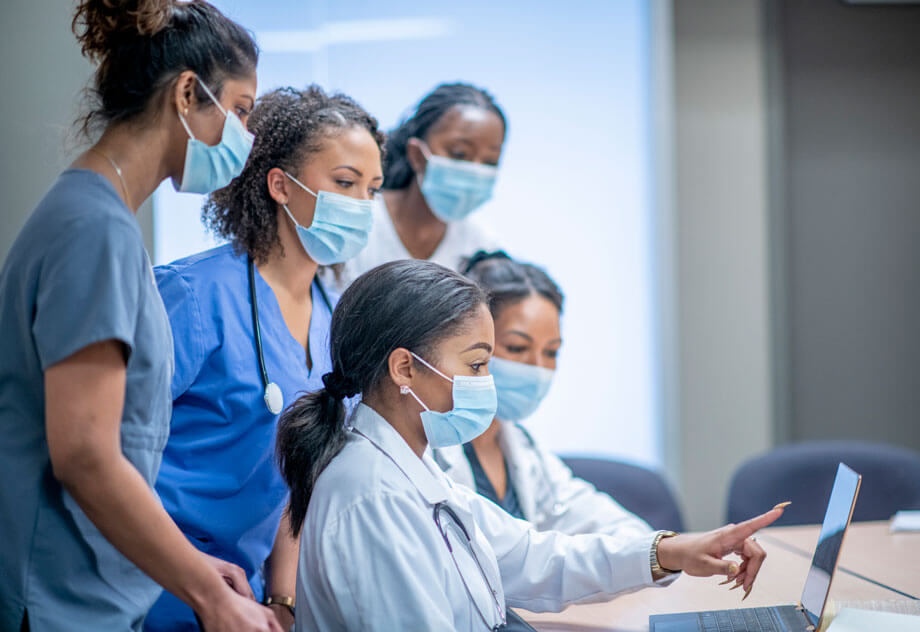I graduated college and started my M.D./Ph.D. training in 2020, during the first year of the COVID-19 pandemic. This was a remarkable time to enter medicine — I met my first patients over Zoom and completed my first Ph.D. rotation virtually. What I most remember about that time was palpable fear. Everyone I knew — patients, professors, classmates, and my own family — had a story about how a virus we were months away from having vaccines for had brought illness, financial turmoil, caretaking challenges, or even death into their lives. Amidst that fear, was an overwhelming sense of urgency, that everyone in the medical field had a role to play in fighting the pandemic regardless of their background.
Just over two years later, I have transitioned from the medical school portion of my training to full-time Ph.D. research; COVID-19 vaccines are readily available and PPE shortages have eased, and remote work and education are no longer the norm. Now, I find myself reflecting on the unique moment in time that I started my medical education, and the opportunities I have had as a future physician-scientist to participate in both the clinical and scientific responses to the crisis.
When I first came to Hopkins (virtually!), I was able to join an interdisciplinary team of electrical engineers and critical-care physicians developing machine learning algorithms to predict oxygen desaturation, when levels drop below a normal range, up to 30 minutes in advance. Amidst ventilator and ICU bed shortages, this early warning would allow health care workers to allocate resources and intervene before crisis occurs. Our conclusions were based on public datasets from patients at 200+ medical centers, and we made our code freely available for anyone to build upon, in the hopes that our collaborative, rapid-response work would help improve the analytics available for critically ill patients. As a first-year medical student, my clinical skills were limited, but I was able to volunteer for programs to check in on vulnerable patients, and dispel misconceptions and fears that community members may have had about the newly available vaccines.
In these experiences, despite the tumultuous nature of medical education at this time, I saw firsthand the role of both research and clinical care during a crisis. While I hope we never see another pandemic, I do see this period of my training as a microcosm of my future career.
As the COVID-19 pandemic continues into its third year, I find myself reflecting on a quote from Einstein: “We cannot solve our problems with the same thinking we used when we created them.” For ages, medicine and quantitation have been thought of as disparate fields — where the practice of medicine is a humanistic art and quantitative research is an impersonal science. My experiences as a medical student and computational scientist during the pandemic have shown me how outdated this thinking is. We cannot address urgent problems without innovative approaches that transcend disciplinary boundaries and encourage diverse individuals to come together in pursuit of a common goal — creating transformative technologies that save lives.
Related Content
- Resuming Medical Training in the Era of COVID-19: A Medical Student’s Thoughts
- The Commercialization Academy at Johns Hopkins Technology Ventures
- The Boundaries We Cross
- 19th-Century Technology, 21st-Century Users
Want to read more from the Johns Hopkins School of Medicine? Subscribe to the Biomedical Odyssey blog and receive new posts directly in your inbox.
